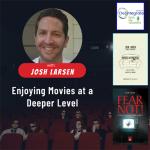This post begins a partnership with Opus: The Art of Work at Wheaton College. Opus Graduate Student Fellows are reading a whole host of interesting books, and you get to benefit from their hard work!
By Sarah DeKoekkoek
In Helping College Students Find Purpose, Robert Nash and Michele Murray address the reality that today’s college students, members of the quarterlife generation, ask questions of meaning and purpose, expecting their educational experiences to answer them. Meaning refers to the ability to make sense of life on an ongoing basis. Purpose suggests an ultimate aim or end.
According to Nash and Murray, these questions, especially those of meaning-making, need to be acknowledged across disciplines and departments on college campuses. They challenge faculty and administrators to contribute to students’ search for meaning. The book begins with a theoretical foundation, exploring the realities of the quarterlife generation and meaning-making. In Part II, the authors explore practical ways in which to engage in meaning-making across campus in teaching, leading, administering, and advising. Part III includes Nash and Murray’s personal narratives of their meaning-making journeys. The primary argument presents itself in the form of collaboration. When faculty and administrators work together to aid students in meaning-making practices, everyone benefits.
Nash and Murray correctly acknowledge that questions of meaning-making penetrate college campuses and are best answered through collaboration between faculty and professional staff members. They draw primarily upon research to support their claims, but they include student testimonies and personal narratives to provide a non-research argument for why meaning-making must take place on college campuses collaboratively.
That being said, the practical blueprint of meaning-making initiatives only goes so far. Meaning-making is not a one-size-fits-all activity. Individuals’ needs and campuses’ cultures must be taken into account before adapting the models that Nash and Murray present in the book. The authors recognize this fault, presenting the practical models as examples of how meaning-making might be carried out collaboratively on college campuses.
Professors and higher education administrators are the primary audience of this book. Faculty members benefit from the pedagogical strategies and logical rationales for implementing meaning-making into teaching within the classroom, lecture hall, or seminar setting. Administrators and staff members benefit from the discussions of how to meet students where they are and engage in conversations of meaning on campus and beyond.
The primary aim of this book, however, is not to segregate the work of meaning-making. Rather, the authors desire that faculty and staff work together, learning from one another, to further the development of meaning within the quarterlife generation. The book provides ways in which collaboration could occur on campuses.













